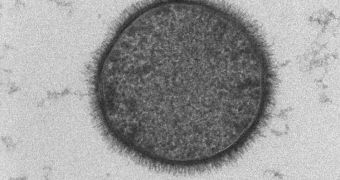Investigators at the Harvard School of Engineering and Applied Sciences (SEAS) say that the structure of the extracellular matrix enveloping bacteria capable of producing biofilms is set up in such a way that it literally forces the microorganisms to swell, spread and expand their colonies.
Biofilms are layers of proteins and lipids that bacteria colonies produce. The structures can cover anything from crops and teeth to surgical equipment and industrial installations or ships, and are extremely difficult to remove.
Several conditions in which biofilms are formed within the human body are lethal, simply because bodily defenses cannot penetrate these resilient structures. To make matters worse, researchers determined some time ago that biofilms have a natural tendency to spread.
SEAS researchers set out to figure out precisely why that was happening. They focused their attention on a mesh of proteins and sugars that forms on the outside of individual bacteria, called the extracellular matrix (ECM).
Scientists figured out that the ECM was responsible for creating a great deal of osmotic pressure behind the biofilms. This force literally pushed the slimy structures ever outwards, forcing the colony to grow as well. This accounts for why some bacteria spread so fast.
Details of the new research study appear in the latest issue of the esteemed journal Proceedings of the National Academy of Sciences (PNAS).
“Our work challenges the common picture of biofilms as sedentary communities by showing how cells in a biofilm cooperate to colonize surfaces,” explains SEAS research associate and lead study author Agnese Seminara.
The investigation was led by SEAS professor of microbiology and immunobiology Roberto Kolter. He is an expert on the genetic intricacies of the B. subtilis bacterium, as well as on the biofilm this microorganism produces.
“This project establishes a link between the phenotype, the physically observable traits of biofilm growth, and the genetic underpinning that allows spreading to happen in B. subtilis,” concludes the Harvard Glover professor of applied mathematics and applied physics, Michael Brenner.

 14 DAY TRIAL //
14 DAY TRIAL //